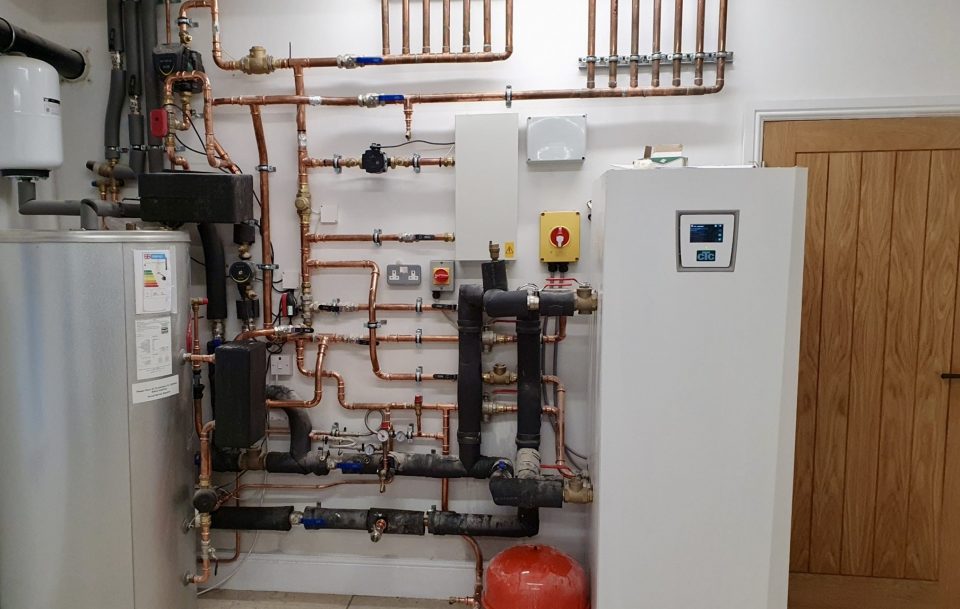This article showcases a ground source heat pump installation I spearheaded, with Darren Jones expertly handling the plant room’s pipework. At the heart of this project is a 28kW single-phase CTC heat pump, seamlessly integrated with a ground source collector drilled by my son.
The innovative system configuration includes two 14kW brine to water units directly connected to a robust screed underfloor heating setup, avoiding the need for a buffer tank or system separation. The control strategy for the expansive 650 square meter property is straightforward yet effective, relying on the heat pump and adjustable thermostats in four bedrooms, leaving the remainder of the space to be regulated by the heat pump’s built-in temperature sensor. This design epitomises an open zone, low-temperature approach, promising excellent efficiency and significantly reduced operational costs.
Additionally, the inclusion of a passive cooling mechanism ensures the home remains comfortable throughout the year, utilising minimal power for maximum comfort.
From the provided graphs, it is evident that with an ambient temperature of 3°C, the house maintained a comfortable 20°C. The brine temperature entering the unit was between 7-8°C, with an average flow temperature of about 30°C. Based on the manufacturer’s data, the extrapolated coefficient of performance (COP) ranges between 6 and 6.5. Given that this is at the end of the heating season, and the system has been operational for nearly a year, this COP is the minimum expected.

The system’s efficiency is highlighted by its approximately hourly cycling under partial load conditions, demonstrating that a buffer tank or system separation is unnecessary with proper design. Unlike on-off compressors, which are prone to cycling and resultant performance degradation, this system showcases the benefits of precise design and selection.
Our approach to system design is grounded in practical, real-world training offered at Ultimate Training and Technical. This departs from outdated methodologies, moving beyond mere theoretical concepts to embrace modern, evidence-based strategies. With the national average seasonal coefficient of performance (SCOP) around 2.8, and the need for heat pumps to be more cost-effective than fossil fuels necessitating a SCOP of 3.5, our approach emphasises the importance of high SCOPs achievable through the right equipment and meticulous system design and commissioning.

